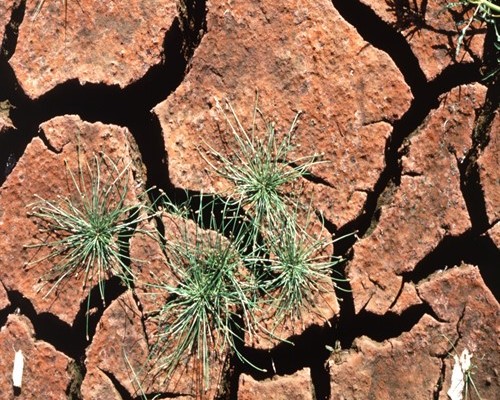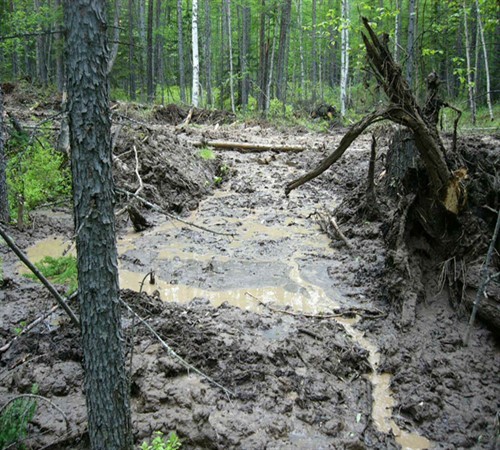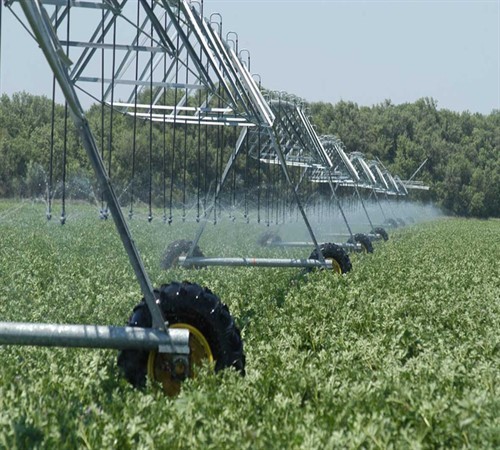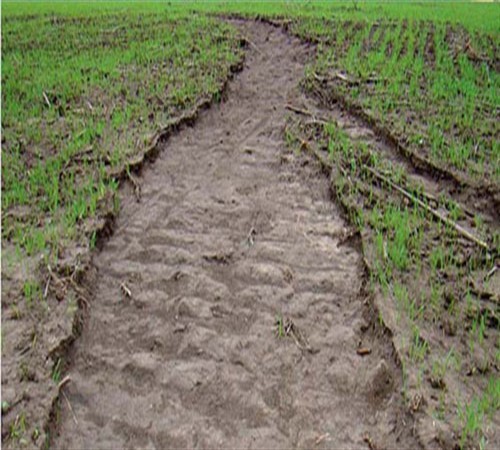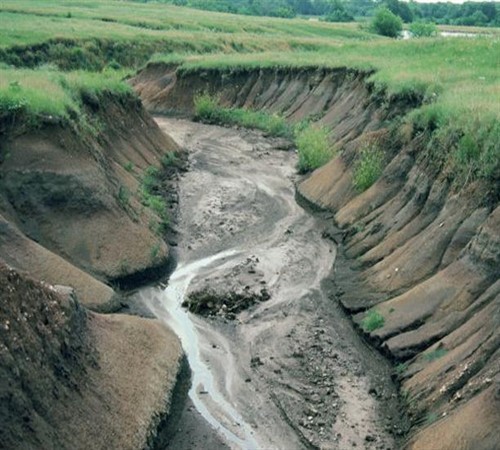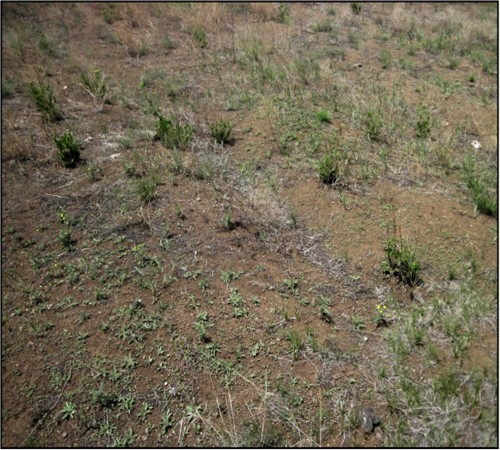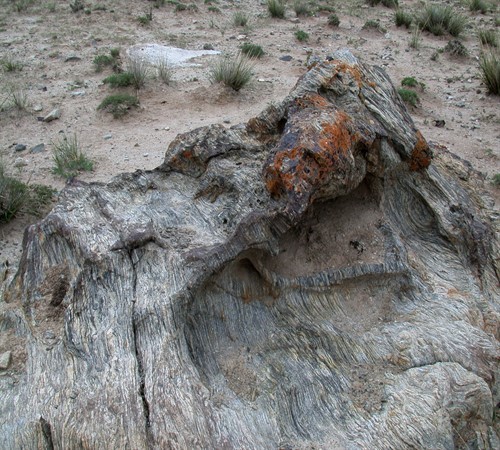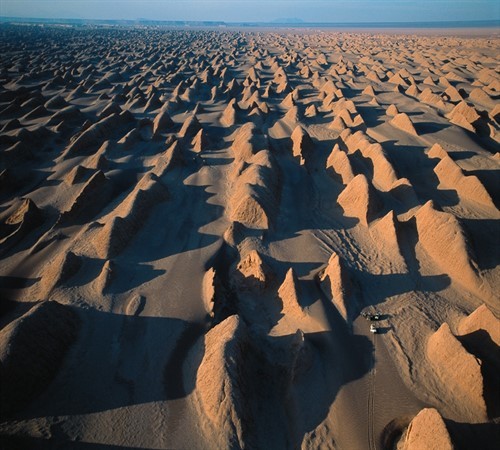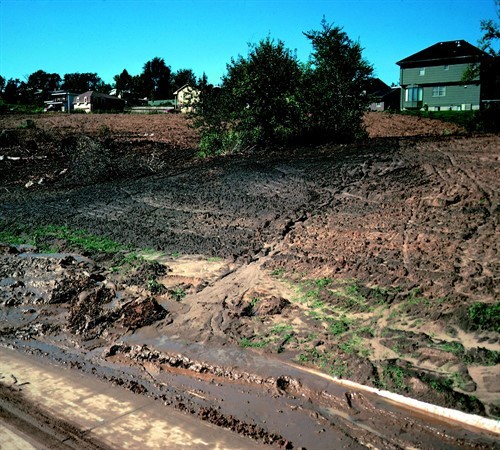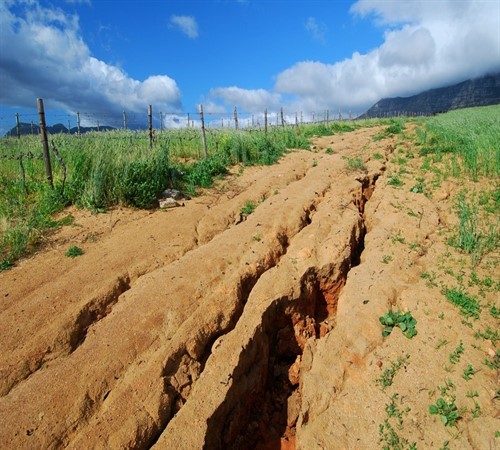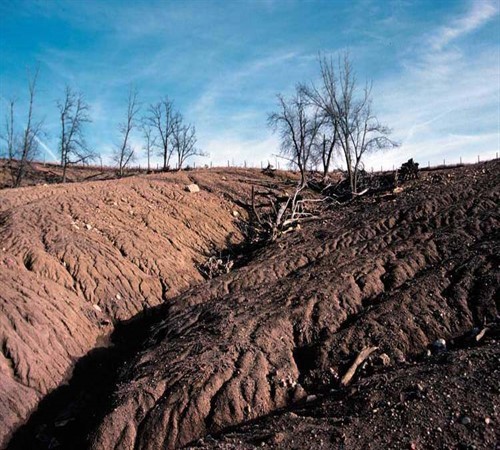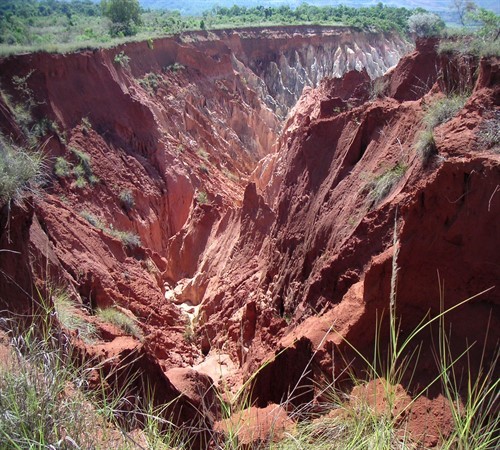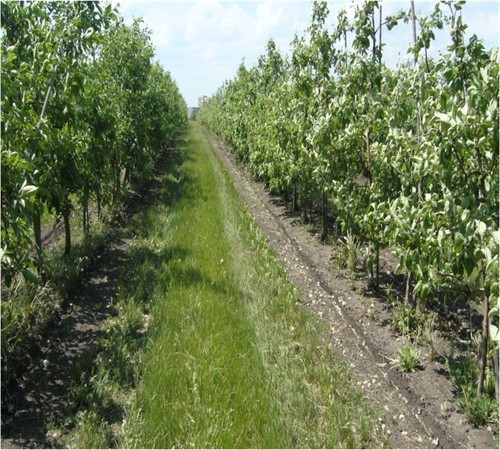Due to the irrational use of land, as well as with the intensive impact of wind, the water is full or partial destruction of the humus layer of the soil, which leads not only to the appearance of ravines and deep fish, but also a significant decrease in fertility. To avoid serious consequences, it is necessary to prolong soil protection from erosion in a timely manner and eliminate damage arising as they appear.
Content
Varieties of erosion
Damage to the soil occurs when the wind or water is directly affected by it, as a result of which distinguishes 2 types of erosion.
Water erosion
With aqueous erosion, the soil destruction is carried out by storm rains, thawed waters, in the process of irrigation activity, under the influence of other time factors by complete or partial washing of the fertile layer.
The degree of damage done depends on the nature of the effects of water on the ground surface, so water erosion happens:
- drip - The damage to the soil occurs droplets of water whose strikes cause the destruction of the structural elements of the soil, and the kinetic blowing energy contributes to the spreading of separated particles of the soil to the sides. On inclined areas, the movement of humus particles occurs over long distances, compared with the flat surface, causing the accelerated development of water erosion of soil. The movement of individual particles is carried out not only by scattering them in different directions, but also the subsequent movement with water drops. The predominance of drip erosion over other types is observed in subtropics and wet tropics;
- plane (surface) is a uniform washout of the fertile layer of soil with rains or irrigation means, the result of which is the exit to the surface of the mother breed. Under the influence of surface erosion in some areas of the damaged territory, scamped, washed soils appear and significantly less than deluvual, weakly sorted sediments. Often, superficial erosion acquires a scale of linear erosion;
- linear - erosion of the soil, accompanied by the appearance of small promotions, which over time are converted to ravines, rods and other recesses. Linear erosion extends to a smaller territory than a plane and drip, although more noticeable. To date, linear erosion is divided into lateral hydraulic and deep, which is manifested in the form of a damaged reservoir bottom, starting at the mouth and continuing over the course until the water flow has energy. A visual example of lateral erosion are beacted by permanent water flows of the rivers. In ravines, lakes, rivers and other reservoirs, deep erosion appears first, which is gradually replaced or complemented by side. Along with the plane, linear erosion prevails on the slopes, slopes and other inclined areas, therefore inherent in steppe, forest-steppe, mountain zones and areas with a strongly dissected relief.
The greatest damage to the soil is applied with surface and linear erosion, which are accompanied by moving with a stream of water of large stones, rock fragments, thereby contributing to the acceleration of soil erosion processes.
Wind Erosion (Deflation)
The essence of the deflation process lies in the separation of small particles of the fertile soil layer and lifting them into the air, forming a dust storm. The separation of new soil particles occurs not only by exposure to wind streams, but also flying particles. Depending on the speed and strength of the wind, the transfer of substances is carried out at an arbitrarily distance. In most cases, wind erosion is susceptible to drained soils, as well as areas, poorly protected by vegetation, so damage from the deflation process is most significant in desert areas, arid regions and steppes.
Features of wind erosion of soil relative to water:
- moving particles over long distances both from top to bottom and bottom up;
- the degree of impact does not depend on the features of the relief;
- the impact of the wind is to blow the individual elements of the soil with the preservation of nutrients, while the aqueous erosion is accompanied by dissolving in the water flow of a large amount of nutrients, not only the dinner soil, but also creating a threat to reservoir contamination.
Along with the water, wind erosion causes significant damage to growing plants and sowing. With a strong blowing out of the particles, the root plant system is broken, leading to their death. At the same time, most of the crops die due to the ground substances applied in a large number of grounds.
Regardless of the factors affecting the soil, the degree of damage depends on the intensity of the flow of erosion processes, and therefore erosion happens:
- accelerated. Erosion, developing accelerated tempo, in a short period of time is able to significantly change the usual landscape of a huge territory, since the soil formation takes slower than the damage caused by erosion, which leads to rapid soil degradation. Quite often, accelerated erosion is a consequence of improper agrotechnical processing of the soil, as a result of which the destruction of humus, mother breed, contributing to the formation of ravines and promoters, whose problem is exacerbated by the periodic impact of natural factors;
- natural. In normal course, erosion does not cause significant harm to the form of the earth's surface, since soil cover in the conditions of natural formation has time to ignore correlative damage caused by water or wind erosion, therefore, the relief changes are insignificant.
Thus, with any prerequisites and formation of soil erosion, it is necessary to immediately begin the development of anti-erosion measures, during which it is worth considering the combination of factors affecting the progressiveness of new formations and the intensity of the development of existing damage.
Causes of erosion
The occurrence and progressiveness of damage to the surface layer of the Earth occurs under the influence of a number of factors, among which the most essential meaning is played:
- Climate. The development of water erosion is observed in the conditions of protracted, storm rains, as well as the rapid melting of snow. Wind erosion is peculiar to climate with a small amount of precipitation and high air temperature that promotes strong soil drying.
- Relief. The degree of damage to the soil under the influence of water increases with the elongation and the steep slope. In addition, on convex slopes there is a more progressive development of erosion than on concave sites. Deflation develops more intensively in flat areas with minimal vegetation cover.
- The properties of the soil are determined by the level of soil resistance to the destructive effects of water or wind or the set of both factors. The greatest resistance to the effects of water erosion includes black-grinding soils, while serous, ferrous-podzolic, sandy and clay soils are the smallest. Wind erosion easily exposed sandy, samp, clay and thin soils in the presence of a dry upper layer of soil.
- Vegetation. The root plant of the plant forms high soil protection from exposure to water and wind, contributes to good water absorbing and preventing the drainage of soil and increasing the resistance to water and wind streams. A small vegetation cover contributes to the soil seal and increase the surface runoff, while the magnificent vegetation reduces the speed of water flow and wind near the soil.
- The economic activity of people associated with the destruction of vegetation, cutting down of forests, a massive dispenser of large land, with the use of heavy equipment, uncontrolled grazing of livestock, leads to a violation of the soil structure and increases the degree of risk for the occurrence of deflation and water erosion.
Thus, the emergence and progressiveness of the development of a particular type of soil erosion affects many factors that need to be taken into account in the process of measures aimed at reducing the risk of developing any damage and direct struggle against soil erosion.
Measures to combat erosion
Increase the soil resistance to the negative impact of wind, water and other factors allow the following activities:
- Singing squares with perennial herbs.
- Mastening lands, prone or prone erosion, across the slopes.
- Timely adjustment of the flow of melt, rainwater by crotes, the bandwidth of snow, intermittent bubbles and other similar techniques.
- Maintaining the normal level of soil moisture, not allowing drying, by harrowing early spring, coating a mulching layer.
- Cross-sowing grain and transverse sowing other crops relative to the slope.
- Timely introduction of organic, mineral fertilizers that contribute to rapid growth of plants.
- Planting bushy plants and perennial herbs.
- Unanswed soil treatment with storage strokes and periodically introduced fertilizers.
- Strip planting of trees and shrubs across the slopes.
- Creating windproof forest strips on the top of the slopes, the bottom of the ravines, along the edges of the fields of crop rotations.
- Looking down slopes with perennial plants.
- Planting shrubs and trees along the shores of rivers, ponds and other reservoirs.
- The construction of sprayers, drainage by laying pipes.
- Terration of slopes.
- Device zejrus.
The set of timely measures to prevent the emergence of new foci of erosion and eliminate the consequences of the erosion sections arose to resist the aquatic and wind erosion, and also improve the structure and properties of the soil, contributing to increasing fertility.

